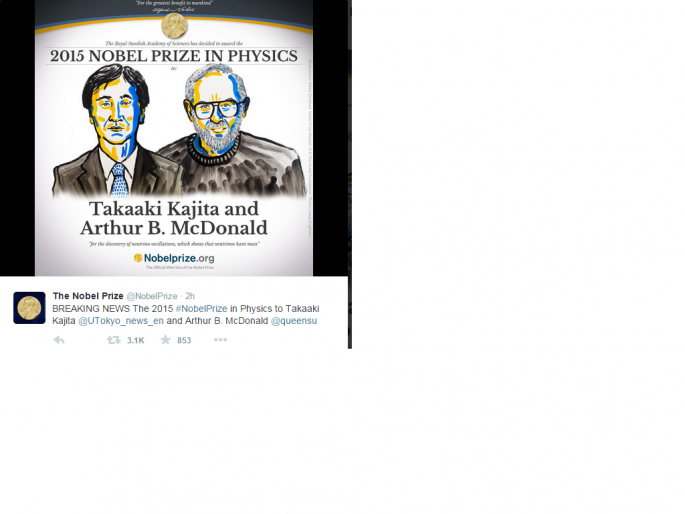The Royal Swedish Academy of Sciences has announced the winners of this year's Nobel Prize in Physics on Oct. 6.
The winners include Takaaki Kajita of the Super-Kamiokande Collaboration, University of Tokyo, Kashiwa, Japan and Arthur B. McDonald of the Sudbury Neutrino Observatory Collaboration Queen's University, Kingston, Canada.
Kajita and McDonald receive the award is for their outstanding contributions to experiments showing that neutrinos have mass. The discovery that neutrinos change from one type to another is the first clear experimental evidence of physics beyond the Standard Model of particles and interactions.
Neutrinos are some of the most abundant particles in the cosmos, and some of the most elusive. Neutrinos have no electric charge; their name approximately means "little neutral ones" in Italian. Neutrinos of three types; electron neutrino, muon neutrino, and tau neutrino.
Neutrino oscillation is a quantum mechanical phenomenon whereby a neutrino created with a particular lepton flavor can later be measured to have a different flavor. The probability of measuring a particular flavor for a neutrino varies periodically as it propagates through space, Forbes reported.
The prize is bestowed for the discovery of neutrino oscillations, which shows that neutrinos have mass. The prize amount of SEK 8 million ($1.2 million) will be shared equally between the Laureates Kajita and McDonald.
The Nobel Prize is a set of annual international awards bestowed in a number of categories by Swedish and Norwegian committees in recognition of academic, cultural and/or scientific advances. The will of the Swedish inventor Alfred Nobel established the prizes in 1895.
The prizes are awarded in Stockholm, Sweden, except for the peace prize which is awarded in Oslo, Norway. The various prizes are awarded yearly.
Each recipient receives a gold medal, a diploma and a monetary award, which is decided by the Nobel Foundation. For more details about the most prestigious award prize visit the official website.



























